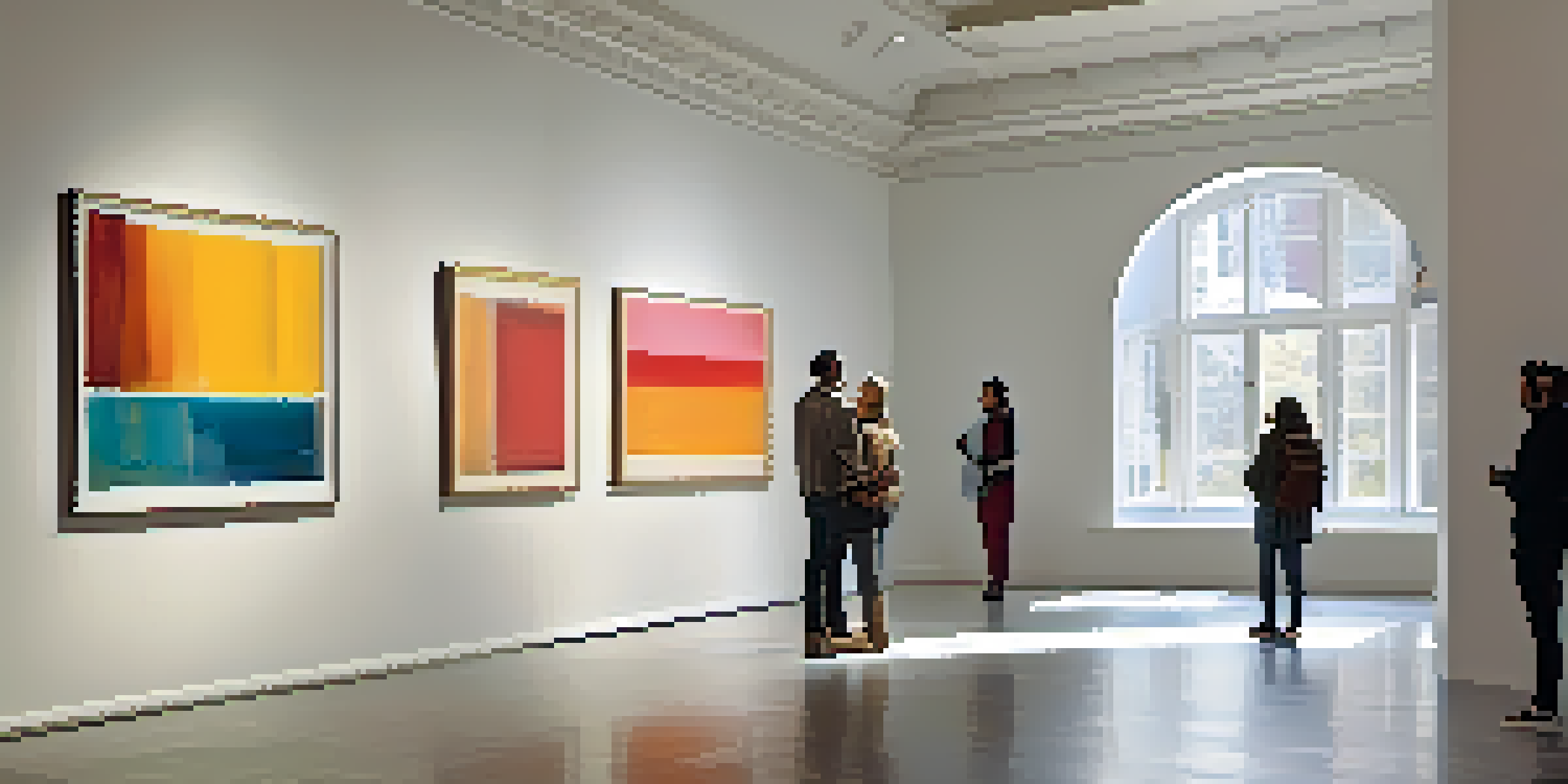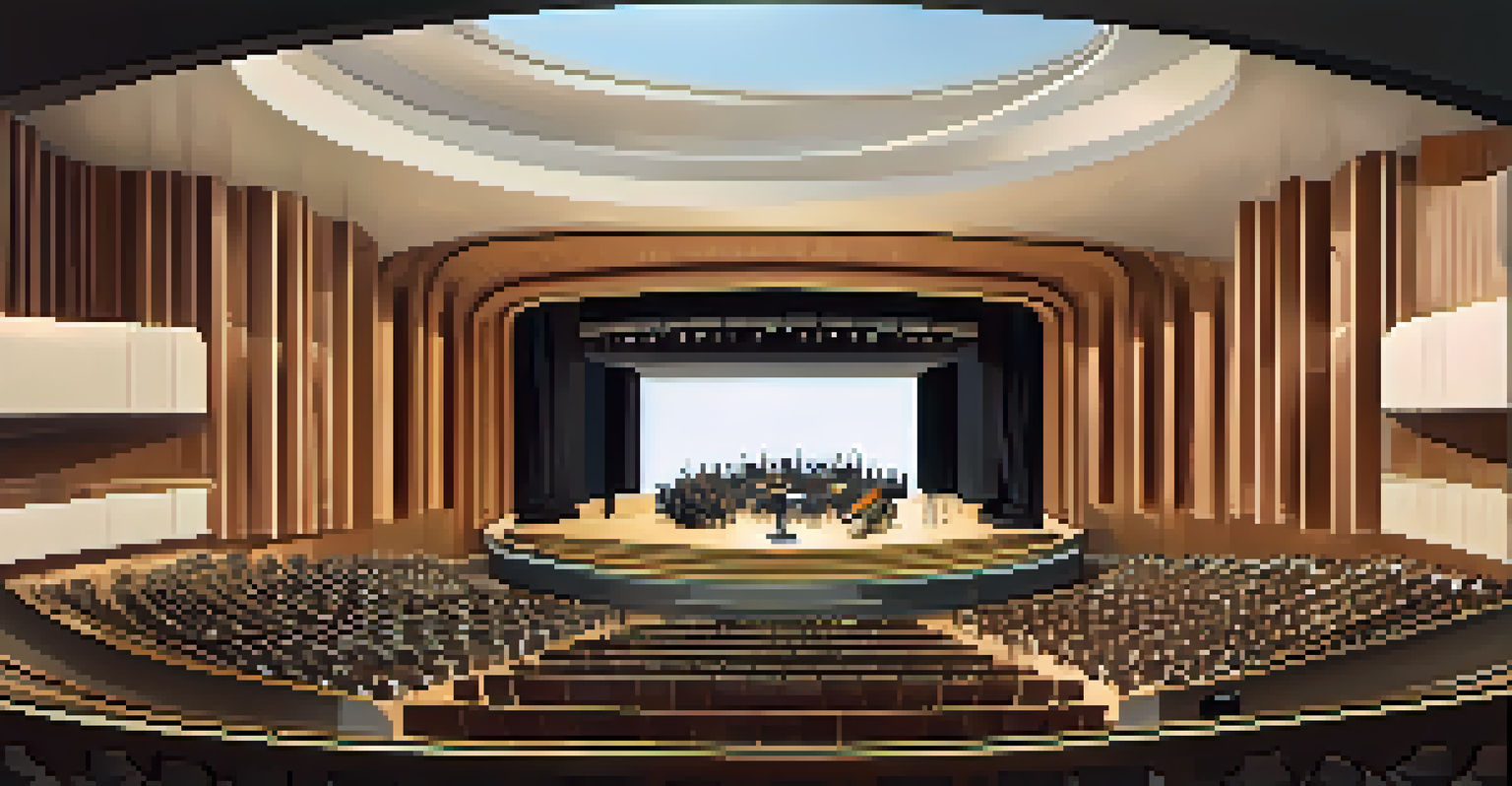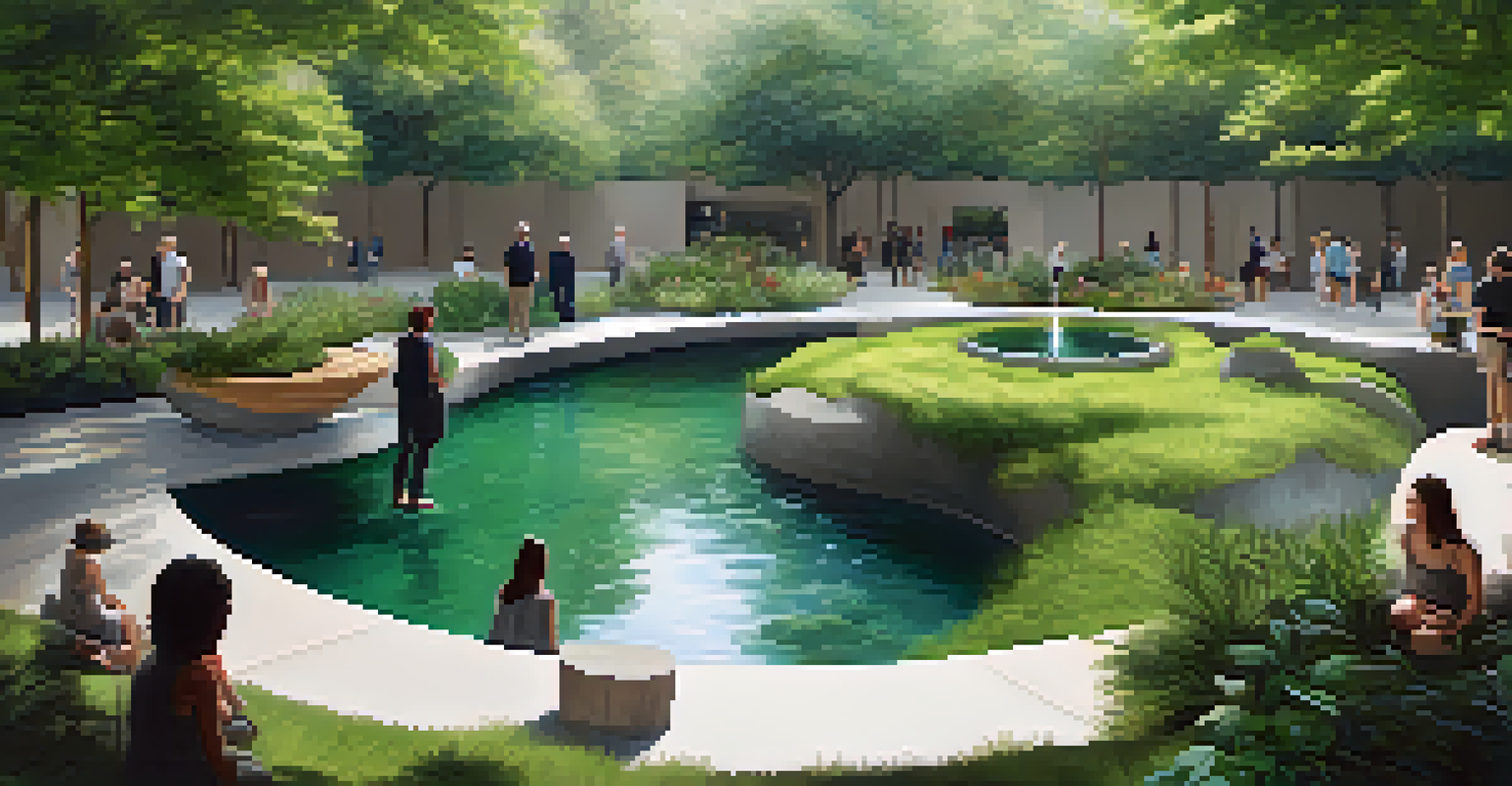The Science of Sound: Understanding Acoustics in Art

What is Acoustics and Why It Matters in Art
Acoustics is the branch of physics that deals with sound, including its production, transmission, and effects. In art, acoustics plays a vital role, influencing how we perceive sound in various environments. Whether it's a concert hall or a gallery, the way sound interacts with space can enhance or detract from our overall experience.
Sound is the vocabulary of nature.
For example, consider how a symphony might sound different in a small room compared to a grand auditorium. The design of the space—such as its shape, materials, and size—can amplify or muffle sound, creating unique auditory experiences. This is why architects and artists must collaborate to ensure that their creations resonate well together.
Understanding acoustics allows artists to create more immersive experiences. By leveraging sound properties, they can engage audiences on a deeper level, making the art not just a visual spectacle but also an auditory journey.
The Role of Sound in Different Art Forms
Sound is not just a background element; it is an integral part of many art forms including music, theater, and even visual arts. In music, the arrangement of instruments and their placement can dramatically change the auditory experience. Similarly, in theater, sound effects and dialogue delivery can enhance storytelling and evoke emotions.

Visual artists also incorporate sound into their works through installations or performances. For instance, a piece of visual art might be accompanied by a soundscape that complements its message or evokes a particular mood. This blending of sound and visual elements can create a multi-sensory experience for the audience.
Acoustics Enhance Art Experiences
Understanding how sound interacts with space can significantly elevate the overall experience of art.
Moreover, sound can serve as a medium of expression in itself. Artists like sound designers and composers manipulate sound waves to create pieces that challenge conventional perceptions of art, inviting audiences to explore the boundaries of creativity.
Acoustic Design: Crafting the Perfect Environment
Acoustic design is a crucial aspect when creating spaces meant for artistic expression. It involves understanding how sound behaves in different environments and making deliberate choices to enhance that behavior. This can include selecting specific materials or altering the architecture to improve sound quality.
Art is the most beautiful of all lies.
For example, concert halls are often designed with curved surfaces that reflect sound waves evenly throughout the space. This design ensures that every note reaches the audience clearly, enhancing their listening experience. Similarly, art galleries may use specific wall textures to minimize echoes and provide a more intimate auditory environment.
By focusing on acoustic design, artists and architects can create spaces that not only look beautiful but sound harmonious. This synergy between architecture and art leads to more engaging experiences that resonate with visitors.
The Psychological Impact of Sound in Art
Sound has a profound psychological impact on human emotions and behavior. In art, the use of sound can evoke feelings of joy, nostalgia, or even melancholy. This emotional response is why artists often consider sound as a vital component of their creations.
For instance, a painting might be paired with a calming soundtrack to enhance the viewer's experience, making them feel more connected to the artwork. Conversely, a jarring sound might be used to provoke thought or discomfort, challenging audiences to confront certain themes.
Sound is Integral in Various Arts
Incorporating sound effectively transforms music, theater, and visual art into multi-sensory experiences.
Understanding the psychological effects of sound allows artists to curate experiences that resonate deeply with their audience, transforming a simple encounter with art into an emotional journey.
Exploring the Intersection of Technology and Acoustics
Advancements in technology have opened new avenues for exploring acoustics in art. Artists now use software and digital tools to manipulate sound in innovative ways. This fusion of technology and art creates opportunities for immersive experiences that were previously unimaginable.
For example, virtual reality (VR) installations often incorporate spatial audio technology to create a 360-degree sound experience. This means that as viewers move through the space, the sounds shift and change, making them feel as if they are part of the artwork. It’s a remarkable way to immerse audiences fully.
Moreover, technology allows for greater experimentation with sound. Artists can create soundscapes that respond to viewer interactions, leading to a dynamic and personalized experience. This interplay between technology and acoustics continues to evolve, pushing the boundaries of what art can be.
Case Studies: Successful Art and Acoustic Collaborations
Several notable projects highlight the successful collaboration between artists and acousticians. One such example is the Sydney Opera House, renowned not just for its stunning architecture but also for its exceptional acoustics. The building's design was carefully crafted to ensure that every performance was experienced as intended.
Another example is the work of sound artist Janet Cardiff, who creates audio walks that blend narrative, sound effects, and music to guide participants through specific locations. These installations invite audiences to experience the space in a unique way, emphasizing how acoustics shape our perception of the environment.
Technology Expands Acoustic Creativity
Advancements in technology allow artists to explore new soundscapes, creating immersive and interactive art experiences.
These case studies demonstrate that when art and acoustics work hand in hand, the result is a powerful experience that transcends traditional boundaries. They illustrate the potential of sound to elevate artistic expression, making it an essential consideration for future projects.
The Future of Acoustics in Art: Trends and Innovations
As we look to the future, the integration of acoustics in art is set to grow even more significant. Emerging trends suggest a greater emphasis on interactive and immersive experiences, where sound plays a central role. Artists are exploring new ways to engage audiences, using technology to create multi-sensory environments.
Additionally, there is a rising awareness of how sound can influence well-being. Art installations that incorporate calming sounds or meditative soundscapes are becoming popular in wellness spaces, highlighting the therapeutic potential of sound. This trend reflects a broader societal shift towards mindfulness and mental health.

Ultimately, as both art and technology continue to evolve, the possibilities for acoustics in art are limitless. The future promises exciting innovations that will further enhance the way we experience and interact with art, making sound an indispensable element of artistic expression.